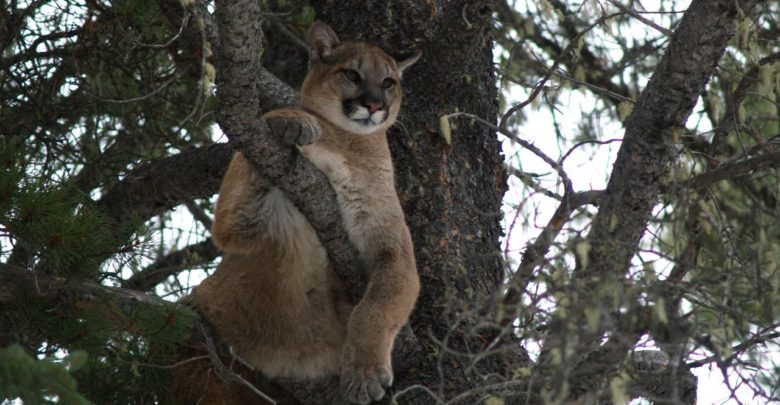 Supplied by Mark Boyce
Supplied by Mark BoyceNew research conducted by biologists at the University of Alberta has uncovered novel insight into the various determinants that influence the habitats of cougars.
What started as an extensive project concerning predation on elk promptly changed gears to focusing on the habitat patterns of cougars after researchers placed Global Positioning System (GPS) collars on the animals. The team was left with a pattern of detailed animal movements leading them to the discovery that daylight, traffic, and topography are three fundamental factors influencing cougars to select habitats near roadways.
Mark Boyce, a professor in the department of biological sciences at the U of A and contributor to the paper, stresses that roads have a major impact on the behaviour of animals that reside in the mountainous regions of the province.

“Cougars tend to avoid roads if there is human traffic on them, and based on prior research with elk and grizzly bears there is sufficient data to show that anything more than 12 vehicles per day on a given road will be a significant deterrent,” Boyce said.
“[That] results in a substantial amount of land not being used by animals within the region because they are avoiding roadways.”
A traditionally overlooked subject when it comes to research on animal habitat, Boyce explained his team was surprised by how strong the cougars diurnal cycle was, which refers to the activity level of the animal based on the time of day.
“Cougars are significantly more willing to go near roads during the morning and evenings, but at night when there isn’t any traffic to speak of, they are relatively oblivious and will sometimes run down roads and you can actually see their tracks,” Boyce stated. “But, during the daylight periods with heavier traffic, they certainly avoid roads depending on how much cover there is.”
Topography, which refers to the variation in a landscape’s features, is also an essential element in the habitat of cougars. To analyze it in the context of the project, Boyce and his team utilized a Geographic Information System (GIS) to calculate the viewscape — how far ahead you can see — of a particular point on a road. From it, they concluded that roads in areas with a rugged topography are more likely to be home to cougars, by virtue of their decreased viewscape.
“We found that viewscape was a significant determinant of where the cougars were found, especially during the daytime,” Boyce explained. “The rugged topography allows them to be closer to the roads than they otherwise would, because they can be situated in a place where they are out of sight.”
This preference to be out of the line of sight, Boyce claims, is due in part to the predatory tendencies of the species.
“They tend not to venture out into open places, and instead want to be in the forest or other rugged terrain where they’ve got some sort of an approach they can make on their prey,” he said. “That’s the reason it is very rare to see a cougar.”
When it comes to the planning of new roads and the expansion or maintenance of already existing ones, Boyce emphasizes it is imperative that these projects be well thought out in advance.
“Roads are one of the most serious conservation problems we have in Alberta, not only due to the construction of them but also because of the people using them for recreational purposes.”
“Recreational travel has a great impact on these animals, because it isn’t necessarily the roads themselves that cougars avoid, [but] rather the people that use these roads. This results in the animals being displaced, if not ultimately killed.”
A potential solution to this problem offered by Boyce is to gate certain roads so the amount of traffic on them is vastly reduced.
“If we can keep the roads gated so that people using the roads for recreational purposes aren’t on them, we can substantially reduce the effect roads have on cougars, bears, wolves, elk, as well as a number of other species that roads are a real problem for,” he started.
“We have already shown that gating a road so that it is only used for travel out of necessity, such as a company checking on an oil well, is very effective in helping wildlife return to a given area.”
Despite the challenges to their habitat posed by roads, Boyce says the population of cougars has been trending upward for a variety of reasons and the overall outlook for the species remains optimistic.
“The population has substantially increased over the past 30 years or so, and our current estimate is that there are about 2,500 cougars in the province due to better management and stricter regulations around hunting,” he said. “They used to only be in the mountains, but now I think they’ve been found in every county in the province, showing up in places they never were before.”




